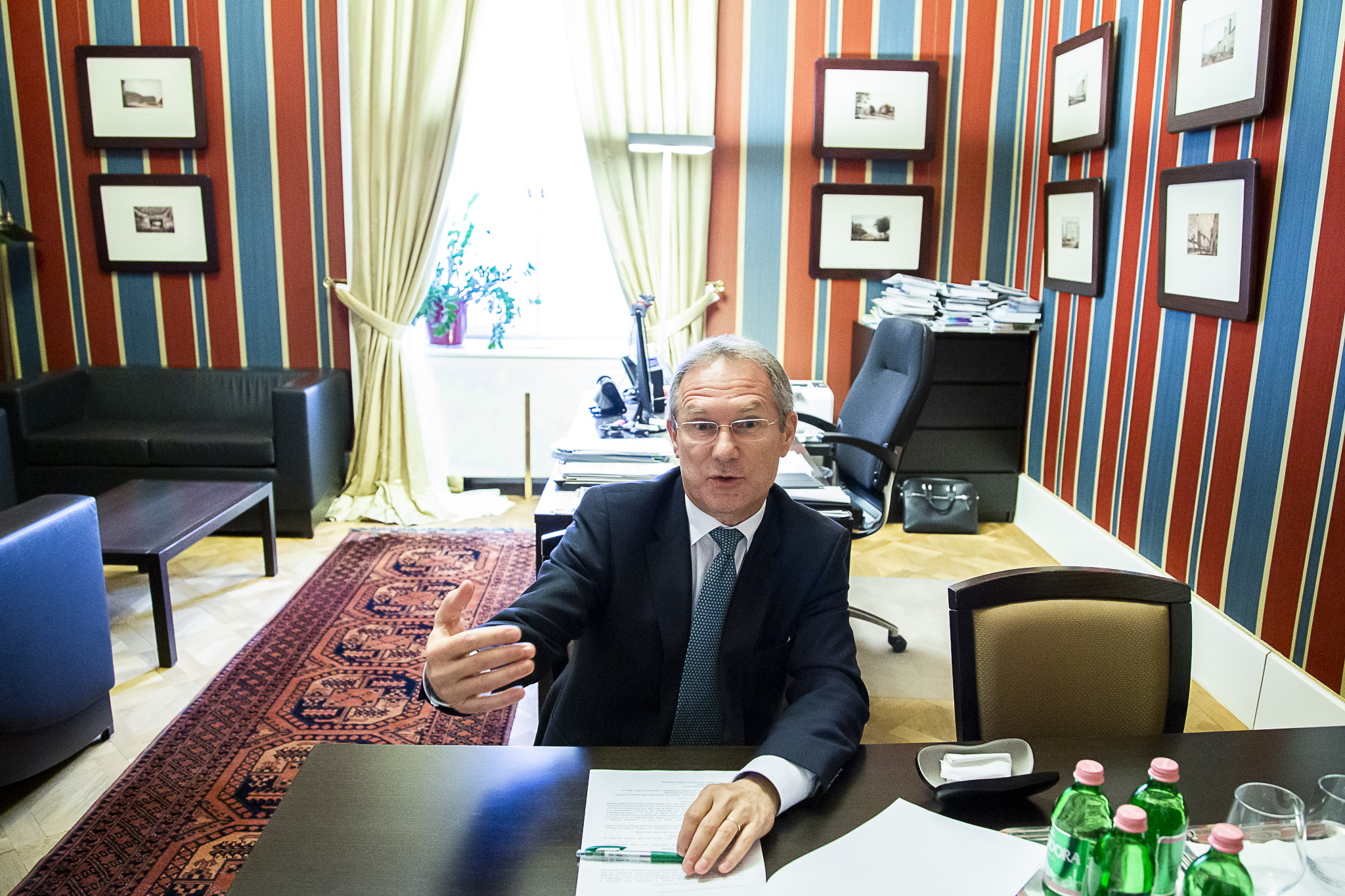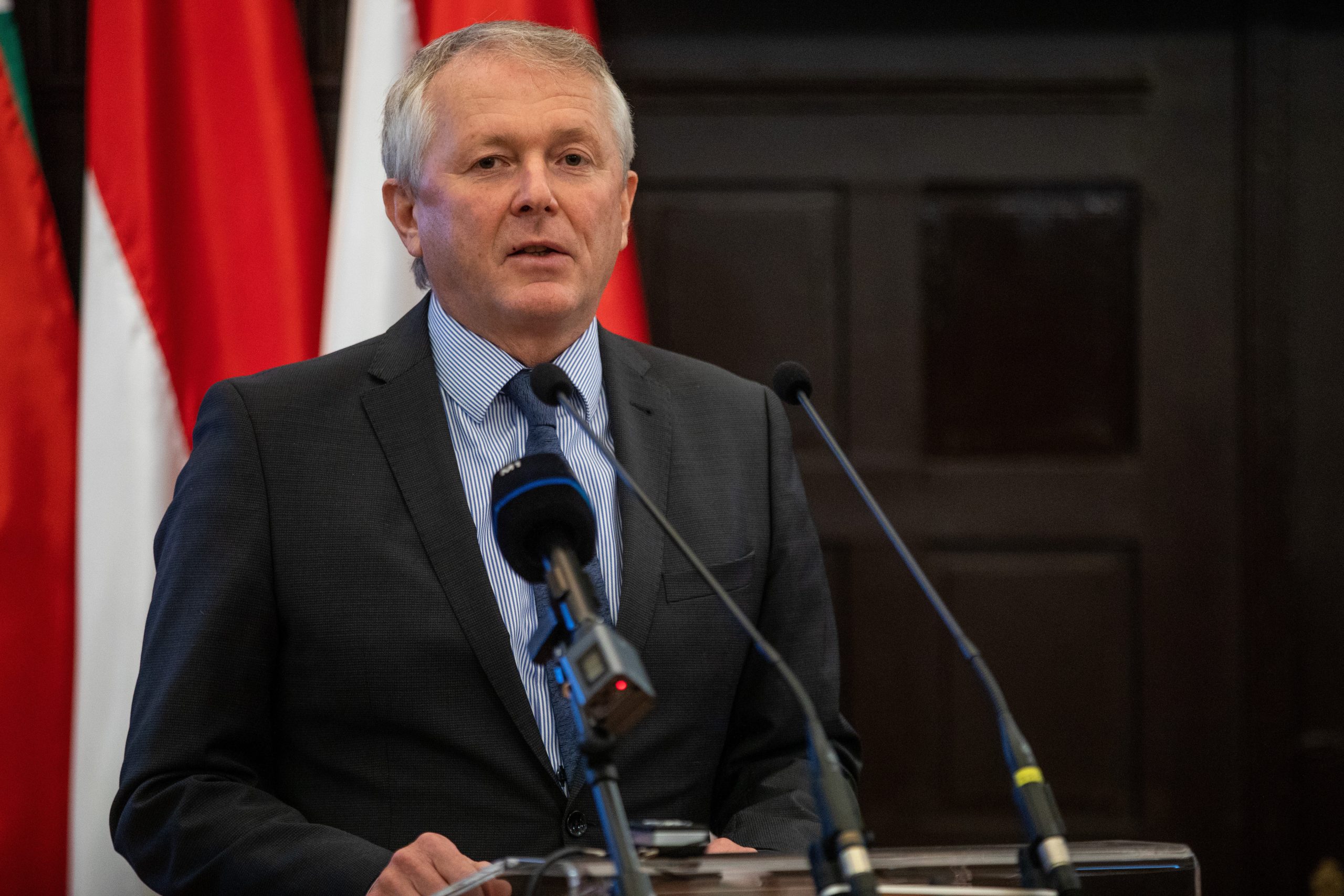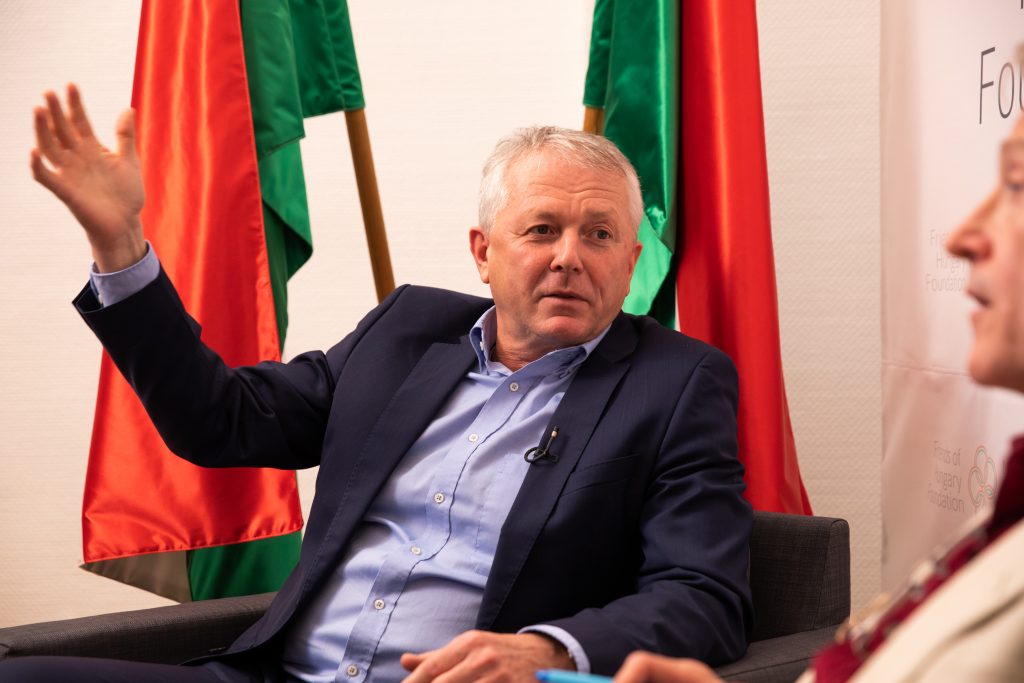
The situation is far more alarming than the thermometer currently suggests, but it’s not hopeless, says Csaba Kőrösi, Head of the Directorate for Environmental Sustainability founded by President Áder.Continue reading

People like renewable energy, and they want more of it, Péter Kaderják told the Friends of Hungary Foundation’s Hungary at First “Site” Conference. The state secretary responsible for energy and climate policy held a presentation addressing Hungary’s energy policy and how the country is planning to fight climate change.
Reaching net zero emissions by 2050 is an ambitious goal which the entire European Union has agreed to achieve. Each nation is responsible for regulating its own sources of energy and for this reason, Hungary has brought forward a strategy for energy and climate policy.
This strategy, Péter Kaderják explains, has four pillars:
Kaderják brought up the most recent Eurostat finding on consumer prices for energy, indicating that Hungary is among the most affordable countries in terms of monthly electricity and gas bills.
Both in the case of household and non-household consumers, Hungarians pay prices significantly lower than the European average which the state secretary believes to be due to a mix of competition on energy markets in promoting efficiency and a regulation of gas and electricity prices. Such regulation provides what he describes as a “safety net” for consumers, who don’t need to worry about skyrocketing bills.
In his presentation, the state secretary showed that since 1990 there has been a “nice decoupling of economic performance from emissions of greenhouse gases.”
We see that the Hungarian economy grew by more than 60 percent in the last 30 years, but our emissions were reduced by 32 percent.”
In this area, he explained, Hungary has had the eighth best performance in the European Union, and it shows that not only is the economy developing rapidly, but this process is happening with the least pollution possible.

Photo by Mátyás Tímár/Hungary Today
Kaderják showed Hungary’s energy policy objectives up to 2030 and 2050, with the goal of reducing greenhouse gas emissions by at least 40 percent by 2030 and 90 percent by 2050, all while promoting renewable sources of energy.
last year not only the government but the Hungarian Parliament put into law that Hungary is to create a climate neutral economy by 2050.”
Also in the interest of meeting the 2050 goal, Kaderják explained that there are three major pillars with regards to electricity, these are:
Hungary is among the countries which promote the use of nuclear energy since it is carbon-free, the state secretary explained. While there are clear risks to this energy source, Kaderják, citing the international energy agency, says that without nuclear power the European Union will be unable to meet its 2050 goals.
I fully recognize, personally, all the risks that are associated with nuclear [energy], but at the moment it seems that without nuclear the mathematics of net zero are impossible.”
Kaderják explained that Hungary has been traditionally dependent on Russia for its natural gas imports, creating a price and supply security risk “due to this unilateral import dependence on Russia for decades.” The current focus, therefore, is to manage the risk and ensure a secure gas supply for Hungary at a time “when Russia is putting stress on the European natural gas market.”

Photo by Mátyás Tímár/Hungary Today
Hungary wants to reduce gas consumption, promote renewable energies, and diversify its import roots and sources of natural gas. Last year Hungary signed its first long-term contract with Shell for liquified natural gas resources as well as with Gazprom which Kaderják says is the “major supplier for the country providing [supply security] for the coming 10-15 years.”
Asked about the Paks II Nuclear Power Plant and its critique of being a Russian foothold on Hungary, the state secretary explained that the cooperation with Russia ties into the bilateral tradition of energy cooperation, as he considers Russia to be the primary source of developing nuclear power supplies in the region. Even so, he added that there are Western companies involved in the project, including General Electric and Framatome-Siemens.
Even so, Kaderják says that if Hungary wants to reach full or significantly greater independence, the answer lies in renewable, specifically solar energy. He explained that there are studies which show that solar radiation that hits Hungary is eight thousand times greater than the primary energy being consumed today. While we can’t utilize all this solar energy, there are definitely more efficient, more favorable ways of harnessing it.
If you put your mental and financial resources into finding better and better ways to mine [solar energy] directly, then you save the climate, you make Hungarian energy independent, and you also get the technologies of the future.”
Featured photo illustration by Tibor Rosta/MTI